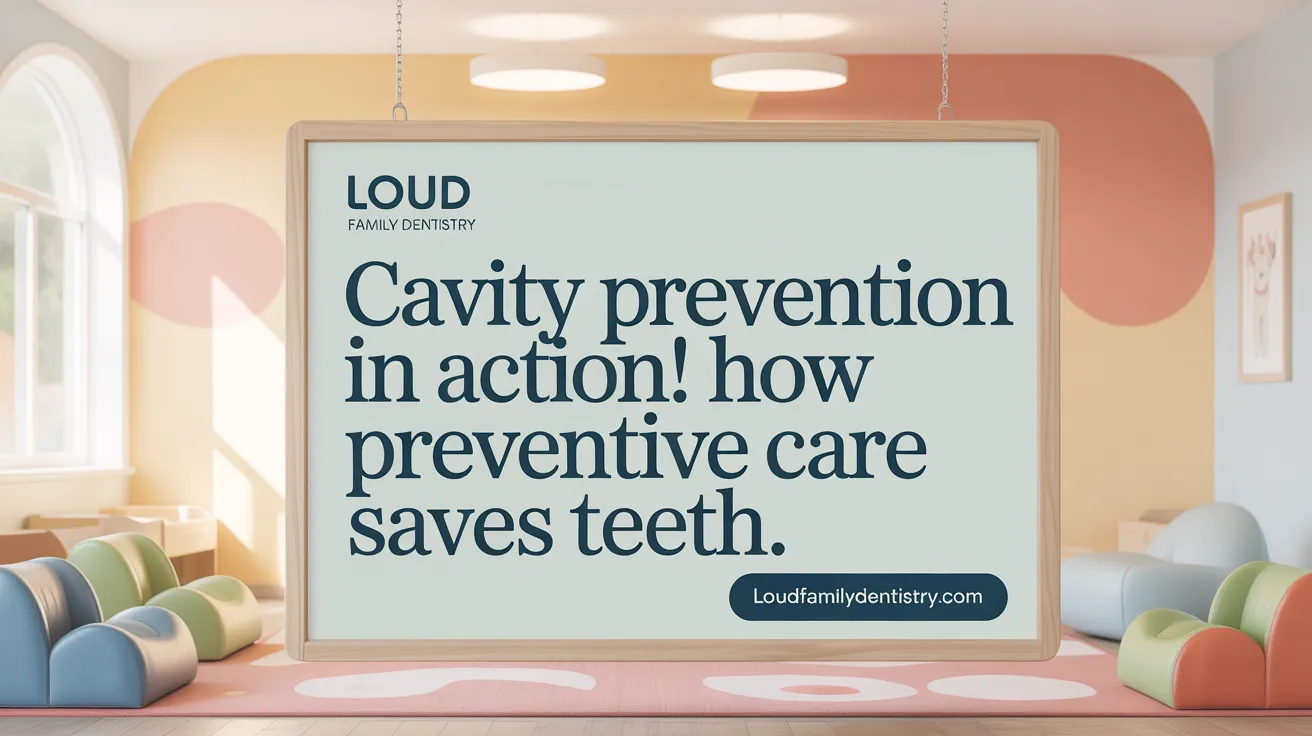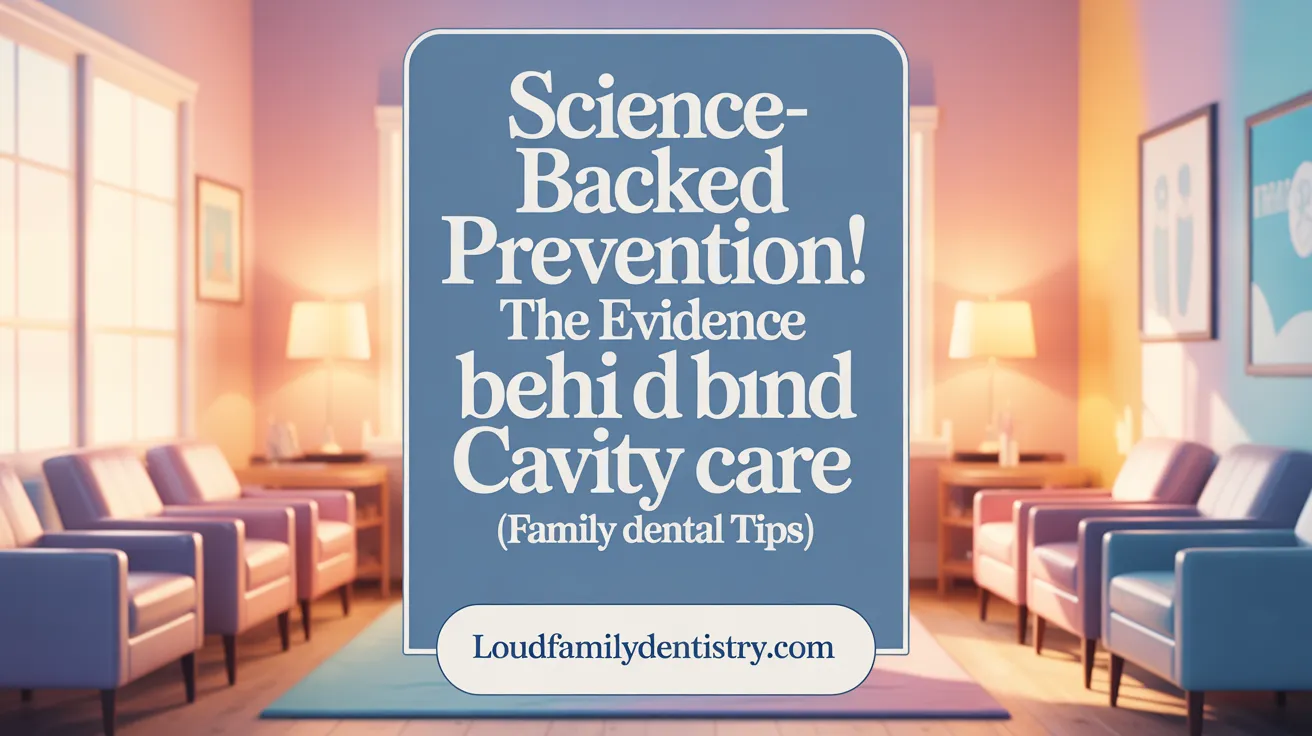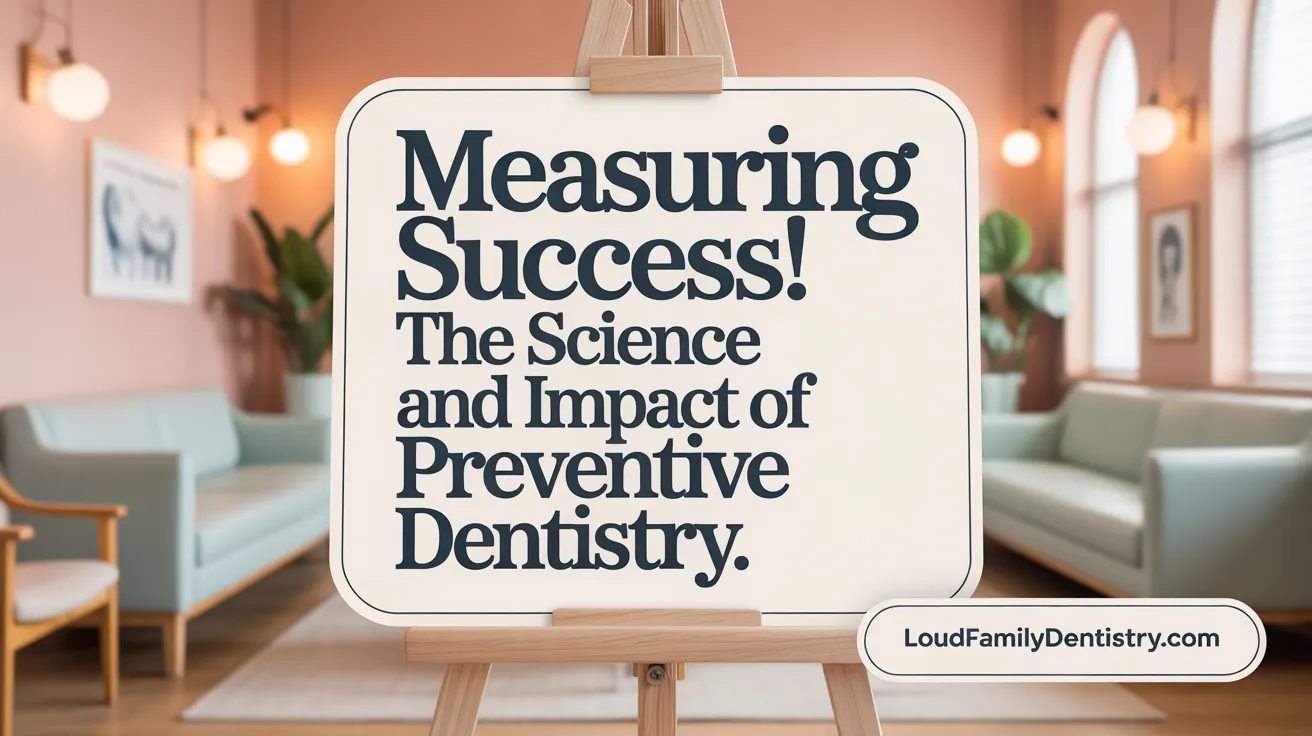Why Preventive Dental Care Matters
Preventive dental care stands as a cornerstone in the battle against cavities and oral diseases. By focusing on early intervention, routine cleanings, and evidence-based home care, this approach not only protects teeth but also reduces the burden of advanced dental treatments. Recent research and extensive data underscore how preventive strategies translate into improved oral health outcomes, substantial cost savings, and enhanced overall well-being. This article explores the scientific and real-world evidence supporting preventive dentistry, highlighting its effectiveness in cavity reduction and the vital role of routine professional cleanings.
Effectiveness of Preventive Dental Care in Cavity Reduction
 Preventive dental care plays a crucial role in reducing cavities by focusing on strengthening teeth and catching issues early. Clear evidence shows that measures like fluoride treatments and dental sealants significantly decrease the risk factors associated with tooth decay. Fluoride strengthens tooth enamel, making it more resistant to acid attacks from bacteria, which helps prevent cavities. Community water fluoridation and professional fluoride applications are supported by extensive research, with fluoride use preventing about 16% to 31% of caries per tooth.
Preventive dental care plays a crucial role in reducing cavities by focusing on strengthening teeth and catching issues early. Clear evidence shows that measures like fluoride treatments and dental sealants significantly decrease the risk factors associated with tooth decay. Fluoride strengthens tooth enamel, making it more resistant to acid attacks from bacteria, which helps prevent cavities. Community water fluoridation and professional fluoride applications are supported by extensive research, with fluoride use preventing about 16% to 31% of caries per tooth.
Dental sealants are another highly effective preventive strategy, especially for children. When applied on molars, sealants create a protective barrier that can prevent up to 80% of cavities within the first two years and continue to offer protection for several years. Their application soon after molars erupt maximizes benefits and significantly reduces future dental procedures.
The cost savings from preventive care are notable. Studies indicate that every dollar spent on prevention can save up to $50 in future restorative or emergency treatments. For example, school-based sealant programs and community water fluoridation collectively reduce dental treatment costs. In particular, providing sealants to children in low-income families could save hundreds of millions annually, alleviating financial burdens on families and healthcare systems.
While some short-term increases in dental visits may occur during initial detection phases, the long-term trends favor reduced need for invasive treatments such as fillings, crowns, or extractions. Adults and seniors also benefit from these strategies, with preventive measures helping maintain oral health amid age-related changes.
Overall, investing in preventive dental approaches not only lowers the incidence of cavities but also enhances overall health, cuts healthcare costs, and improves quality of life across populations. Routine check-ups, combined with fluoride use and sealants, form a comprehensive defense against tooth decay, setting the foundation for lifelong oral health.
The Critical Role of Routine Dental Cleanings in Oral Health

What is the impact of routine dental cleaning on oral health outcomes?
Routine dental cleanings play a vital role in maintaining and improving oral health. These professional sessions remove plaque and tartar, which are primary contributors to tooth decay and gum disease. Without regular cleanings, plaque hardens into tartar, making it difficult to remove and increasing the risk of conditions like gingivitis and periodontitis. When clinicians clean the teeth, early signs of cavities and other oral issues can be detected and treated before they worsen.
Beyond cavity prevention, routine cleanings help eliminate surface stains, leading to a brighter smile. They also help control bad breath and ensure the gums stay healthy. Importantly, these cleanings can contribute to overall health, reducing the risk of systemic diseases such as heart disease, diabetes, and respiratory infections. This is because oral health is closely linked to general health; the bacteria and inflammation in the mouth can affect other parts of the body.
Regular dental visits, typically every six months, enhance long-term outcomes. They decrease the need for extensive and invasive procedures, which not only saves costs but also reduces discomfort and recovery times. In essence, professional cleanings are an effective preventive strategy that supports sustained oral and systemic health, strengthening the foundation for a healthier life.
Early Preventive Dental Visits: Essential for Children's Long-Term Oral Health
 The age at which children first visit the dentist plays a crucial role in their future oral health outcomes. Evidence shows that children who have their initial dental examination before age two tend to need fewer invasive procedures later on. Early visits allow for the prompt detection of cavities, decay, and developmental issues, which can be treated or managed before becoming more serious.
The age at which children first visit the dentist plays a crucial role in their future oral health outcomes. Evidence shows that children who have their initial dental examination before age two tend to need fewer invasive procedures later on. Early visits allow for the prompt detection of cavities, decay, and developmental issues, which can be treated or managed before becoming more serious.
Preventive measures like fluoride applications and dental sealants are most effective when introduced early. Applying fluoride varnish helps strengthen tooth enamel, making teeth more resistant to decay. Sealants act as protective barriers on molars and premolars, preventing up to 80% of cavities within the first two years after application. These treatments are safe and long-lasting, providing ongoing protection.
Parental education is another vital component. Early visits provide opportunities to teach parents and caregivers about proper oral hygiene, such as brushing twice daily with fluoride toothpaste, flossing, and maintaining a healthy diet. Early guidance on avoiding sugary foods, using fluoridated water, and discouraging harmful practices like DIY orthodontics or oral piercings can significantly reduce future risks.
Regular, routine check-ups also foster positive experiences with dental care, helping children feel comfortable and less anxious. Building a foundation of good habits early ensures long-term benefits, reducing the need for more invasive and costly treatments later in life.
In summary, establishing early preventive dental visits for children supports cavity prevention, promotes healthy habits, and helps decrease disparities in oral health, creating a healthier future generation.
Scientific Foundations Behind Cavity Prevention Strategies

What scientific data supports cavity prevention methods?
A robust body of scientific research underpins the effectiveness of various cavity prevention strategies. One of the most well-supported methods is fluoride use. Studies show that fluoride—whether through community water fluoridation, fluoride varnishes, or toothpaste—strengthens tooth enamel and makes it more resistant to acid attacks from plaque bacteria. Fluoride's ability to promote remineralization and inhibit demineralization forms the foundation of modern preventive dentistry.
Dental sealants are another proven approach. These thin plastic coatings are applied to the chewing surfaces of molars and premolars. They create a physical barrier that blocks food particles and bacteria from settling into fissures and pits, major sites for cavities. Scientific studies consistently demonstrate that children with sealants are significantly less likely to develop cavities, with protection lasting several years with proper maintenance.
Xylitol, a sugar alcohol used as a sweetener, also has scientific backing. It interferes with the metabolism of cariogenic bacteria like Streptococcus mutans, reducing their ability to produce acid and form plaque. Regular use of xylitol chewing gum or products can diminish bacterial colonization, lowering cavity risk.
Risk-based assessments and protocols like CAMBRA (Caries Management by Risk Assessment) have been validated through clinical trials. This personalized approach evaluates individual risk factors such as dietary habits, oral bacteria levels, and saliva flow, allowing tailored preventive measures. These evidence-based strategies have been shown to effectively slow or stop the progression of caries, especially in vulnerable populations.
Public health initiatives such as fluoride programs and education campaigns are also supported by scientific data, highlighting their role in reducing the prevalence of dental decay. Altogether, these strategies form a scientifically validated framework for cavity prevention that enhances oral health outcomes across populations.
Long-Term Research Outcomes Highlight Preventive Dentistry's Success
What are the long-term outcomes and research findings on preventive dentistry?
Research into preventive dentistry consistently shows positive long-term benefits for individuals practicing routine care. Regular dental check-ups, professional cleanings, and good oral hygiene habits—like brushing twice daily with fluoride toothpaste—are linked with lower rates of cavities, tooth loss, and gum disease.
One notable intervention is the application of dental sealants. Studies reveal that sealants can prevent up to 80% of cavities in children during the first two years after application. Over time, this translates to fewer restorative procedures and emergency dental visits, which reduces overall healthcare costs and improves quality of life.
Routine exams enable early detection of dental issues, often leading to less invasive treatments and better outcomes. While initial treatments may seem more frequent, evidence suggests that consistently maintaining preventive care results in lasting improvements, less disease progression, and cost savings.
Long-term data also indicate that the benefits of prevention extend beyond individual health to broader societal impacts. Dental sealants and regular care reduce the need for costly restorative treatments, decreasing the financial burden on health systems and families.
Regardless of socioeconomic background, sustained preventive practices contribute to better oral health. They support the body’s overall health, reducing risks linked to tooth decay, infections, and systemic diseases like cardiovascular conditions.
In summary, research affirms that regular preventive dentistry leads to significant reductions in dental diseases, cost savings, and enhanced life quality over the years, emphasizing the value of early and consistent care.
Integrating Home Care and Professional Cleanings for Optimal Prevention
What supporting data exist on the benefits of preventive dental practices, such as proper home care and routine cleaning?
Extensive research from clinical studies and systematic reviews confirms that proper home oral care combined with regular professional cleanings significantly reduces oral disease risk. Brushing twice daily with fluoride toothpaste for at least two minutes has been shown to lower the chances of developing cavities and gum issues. Studies indicate that a brushing duration of two minutes yields better plaque removal compared to shorter brushing times, making it more effective in protecting enamel.
Flossing or using interdental cleaning devices daily is also highly recommended. Evidence suggests that adults who frequently clean between their teeth experience less periodontitis and maintain healthier gums. Devices like dental floss, interdental brushes, oral irrigators, and woodsticks are all effective options, and choices often depend on individual preferences and abilities.
The use of fluoride-containing products, such as mouthrinses and fluoridated toothpaste, offers additional caries protection. Research shows that fluoride can prevent 16% to 31% of cavities per tooth or surface, strengthening tooth enamel against acids produced by bacteria.
A healthy diet low in sugary foods and drinks supports these efforts by decreasing the substrates bacteria feed on, thereby reducing decay risk. Limiting acidic foods also helps protect tooth surfaces.
Routine dental visits for professional examinations, cleanings, and X-rays allow early detection of problems and removal of plaque and tartar that cannot be eliminated at home. These visits not only prevent disease progression but also lower the need for more invasive and costly procedures in the future.
In summary, combining diligent daily home care—brushing with fluoride toothpaste, flossing, and dietary management—with regular professional dental visits creates a synergistic effect. This integrated approach maximizes the prevention of cavities, periodontal disease, and systemic health issues, supporting lifelong oral health and overall well-being.
Evaluating and Measuring the Effectiveness of Preventive Dentistry Strategies
 Evaluating the success of preventive dentistry strategies involves a mix of research approaches that include clinical trials, epidemiological studies, and economic analyses.
Evaluating the success of preventive dentistry strategies involves a mix of research approaches that include clinical trials, epidemiological studies, and economic analyses.
Clinical trials and observational studies provide direct evidence of how preventive measures like water fluoridation, dental sealants, and fluoride varnish influence dental health outcomes. These studies often focus on outcomes such as reductions in cavities, periodontal issues, and improvements in patient-reported quality of life measures, including quality-adjusted life years (QALYs) and disability-adjusted life years (DALYs).
Economic assessments are integral in understanding the value of preventive care. Cost-effectiveness analyses compare the costs of interventions to the health benefits achieved. For example, water fluoridation has been consistently shown to be cost-saving or highly cost-effective, saving communities significant treatment costs annually.
Targeted strategies, such as applying dental sealants to children at high risk for cavities, are evaluated based on their ability to prevent tooth decay and their economic efficiency. The effectiveness of these interventions varies depending on individual risk profiles and local context.
Quality of life assessments capture the broader benefits of preventive strategies, measuring improvements in daily functioning and well-being. These metrics help justify the implementation of preventive programs beyond simply reducing disease incidence.
In policy and practice, these evaluations often consider different perspectives—whether societal, provider, or patient—and incorporate discount rates to compare future costs and benefits. They also highlight the importance of expanding research to underserved populations, where the impact and cost-effectiveness of prevention may differ.
Despite substantial evidence supporting many preventive methods, research gaps remain. These include the long-term benefits of early intervention, the comparative effectiveness of various delivery models, and the impact of prevention on adult periodontal disease and caries.
Future research directions aim to refine evaluation tools, incorporate newer technologies like teledentistry and AI diagnostics, and focus on low-income and high-risk populations. Understanding these factors will enhance the ability to design efficient, accessible, and sustainable preventive dental programs.
Preventive Dental Care as a Pillar for Overall Oral Health Maintenance
How does preventive dental care contribute to overall oral health maintenance?
Preventive dental care is essential for preserving oral health by catching problems early and providing timely treatments. Regular dental examinations allow dentists to identify cavities, gum disease, and even warning signs of oral cancer before they become severe.
Professional services such as teeth cleanings, fluoride applications, and dental sealants are fundamental components of preventive care. Cleanings remove plaque and tartar that regular brushing can't eliminate yet are pivotal in preventing decay and periodontal issues. Sealants, especially in children, create protective barriers on molars, significantly reducing cavity risk.
Good at-home habits complement professional care, including brushing twice daily with fluoride toothpaste and daily flossing. These routines work together to prevent plaque buildup, which is the main cause of dental decay and gum infections.
Advanced diagnostic tools like digital X-rays enable early detection of internal problems, often invisible to the naked eye. Prompt intervention based on these findings can prevent complex, invasive procedures, saving considerable costs and discomfort.
Beyond the mouth, preventive dental care benefits overall health by lowering the risk of systemic conditions linked to oral bacteria and inflammation, such as heart disease, diabetes, and respiratory issues.
In all age groups, from young children to seniors, consistent preventive measures foster lifelong oral health. For children, early intervention with fluoride and sealants builds a foundation for healthy teeth well into adulthood.
Implementing comprehensive preventive oral health strategies not only reduces the incidence of dental diseases but also results in notable health cost savings. Reduced need for restorative treatments translates into fewer dental visits and lower healthcare expenses.
Ultimately, preventive dental care supports better quality of life, improved self-esteem due to healthier teeth and gums, and reduces risks of associated systemic health problems.
| Service Type | Age Group | Benefits | Cost Impact |
|---|---|---|---|
| Routine exams, cleanings | All ages | Detect problems early, maintain hygiene | Cost savings over invasive treatments |
| Sealants | Children and teenagers | Reduce cavities in molars | Reduced future restorative needs |
| Fluoride treatments | Children, high-risk adults | Strengthen enamel, prevent decay | Long-term savings in dental care costs |
| Diagnostic X-rays | All ages | Detect hidden issues early | Prevention of expensive procedures |
Regular maintenance and proactive measures, supported by a health-conscious lifestyle, make preventive dental care a vital component for overall well-being and long-term health.
Empirical Support for Routine Dental Procedures in Cavity Reduction
What evidence supports routine dental procedures as effective in reducing cavities?
Numerous clinical studies and systematic reviews have established the effectiveness of routine dental procedures such as cleanings, fluoride applications, and sealants in preventing cavities.
Professional cleanings, or prophylaxis, remove plaque, tartar, and stains, which are primary factors in cavity development. These cleanings help prevent the formation of acid-producing bacteria that erode enamel.
Fluoride treatments, including the use of fluoride toothpaste and professional fluoride varnishes, strengthen tooth enamel and make it more resistant to decay. Studies show that fluoride use can prevent between 16% and 31% of caries per tooth or surface. Community water fluoridation remains one of the most effective public health measures, saving billions annually in treatment costs.
Dental sealants act as physical barriers on the chewing surfaces of molars and premolars. When properly applied soon after tooth eruption, sealants can prevent up to 80% of cavities in children within the first two years. They are especially effective in high-risk populations and have been shown to significantly reduce future restorative procedures.
In addition, silver diamine fluoride (SDF) is gaining recognition as a minimally invasive treatment that halts early decay and prevents deterioration.
How do population-based outcomes support these findings?
Large-scale programs focusing on risk-based prevention—such as those implemented by providers like Willamette Dental Group—demonstrate that adherence to preventive protocols correlates with fewer decayed teeth and reduced need for invasive procedures.
Studies using Medicaid data in states like California support that use of preventive services—including fluoride varnish and sealants—is associated with lower long-term expenditures and better dental health outcomes.
What role does treatment adherence and risk-based protocols play?
Adherence to recommended preventive care protocols, especially in children and high-risk groups, significantly decreases cavity incidence. Implementing risk-based strategies tailored to individual needs ensures that those who benefit most from interventions like sealants and fluoride receive them early, maximizing their protective effects.
What do guidelines and systematic reviews conclude?
Guidelines from organizations such as the American Dental Association (ADA) and the CDC recommend routine preventive procedures as standard care to reduce cavities. Systematic reviews confirm that fluoride toothpaste, professional fluoride application, sealants, and proper oral hygiene practices are supported by high-quality evidence for cavity prevention.
Overall, the convergence of laboratory, clinical, and population data underscores that routine dental procedures are an essential element in controlling dental caries across various populations and age groups.
Data Highlighting the Importance and Benefits of Preventive Dental Interventions
What data demonstrate the importance and benefits of preventive dental interventions?
Research and national data show that preventive dental measures, such as dental sealants and community water fluoridation, play a crucial role in reducing dental decay, especially among children. Dental sealants can prevent up to 80% of cavities in young molars within the first two years of application. This protective barrier is particularly significant for children aged 6 to 11, who are three times more likely to develop cavities without sealants.
Community water fluoridation benefits over 70% of the U.S. population and has been linked to a reduction in tooth decay across communities, saving billions in dental treatment costs annually. This public health measure is associated with savings of approximately $6.5 billion each year, highlighting its cost-effectiveness.
Economically, widespread application of sealants to nearly 7 million children from low-income families could save an estimated $300 million annually in treatment costs. Implementing school-based sealant programs and fluoride varnish applications not only reduces cavity rates but also saves money in long-term dental expenses.
Additionally, early dental visits and routine professional cleanings significantly decrease the likelihood of requiring invasive procedures later in life. Children with early, preventive dental care show better long-term oral health outcomes, which in turn lowers overall treatment expenditure.
Despite these clear benefits, many communities face barriers to accessing preventive care, leading to disparities in oral health. Increasing access and emphasizing routine preventive routines are essential to closing these gaps, reducing the burden of dental diseases, and supporting healthier populations overall.
| Intervention Type | Impact | Cost Savings | Long-term Benefits |
|---|---|---|---|
| Dental Sealants | Prevents up to 80% of cavities in children | Up to $300 million annually | Reduces need for invasive procedures |
| Community Water Fluoridation | Benefits over 70% of Americans, massive savings | Around $6.5 billion/year | Promotes lifelong oral health |
| Early Preventive Visits | Lower risk of future invasive care, cost-effective | Reduced lifetime costs | Better overall oral health outcomes |
Efforts to promote early, routine, and accessible preventive dental care can dramatically improve oral health outcomes while saving substantial healthcare resources.
Harnessing the Power of Prevention for Lasting Oral Health
The comprehensive body of evidence affirms that preventive dental care is one of the most effective strategies to reduce cavities, improve oral health outcomes, and lower healthcare costs. From early childhood dental visits aligned with fluoride and sealant application to routine professional cleanings and dedicated home care, preventive dentistry addresses risk factors and disease progression proactively. These practices not only safeguard teeth and gums but also contribute to systemic health benefits and overall quality of life. Despite challenges in access and utilization, the data underscore the urgency and value of expanding preventive care programs and education. Embracing evidence-based preventive methods offers a sustainable path to healthier smiles, fewer invasive treatments, and improved oral health equity across all populations.
References
- Early Preventive Dental Visits: Do They Reduce Future ...
- The Value of Preventive Oral Health Care | College of Dentistry
- Evidence of effectiveness of preventive dental care in ...
- Home Oral Care
- Preventive Dentistry: What is Preventive Dental Care?
- The Importance of Preventive Dentistry: Benefits and Best ...
- What is Preventive Dental Care
